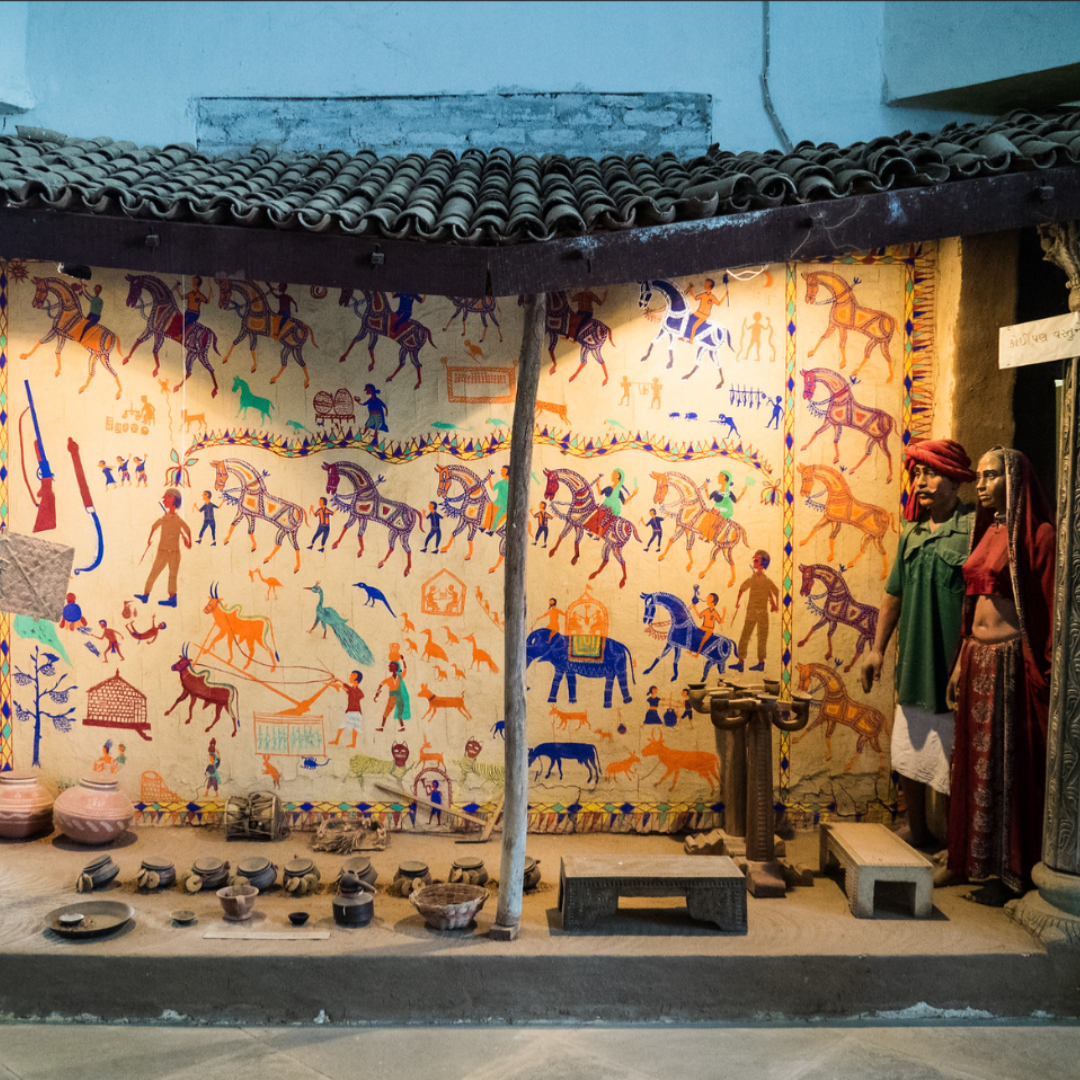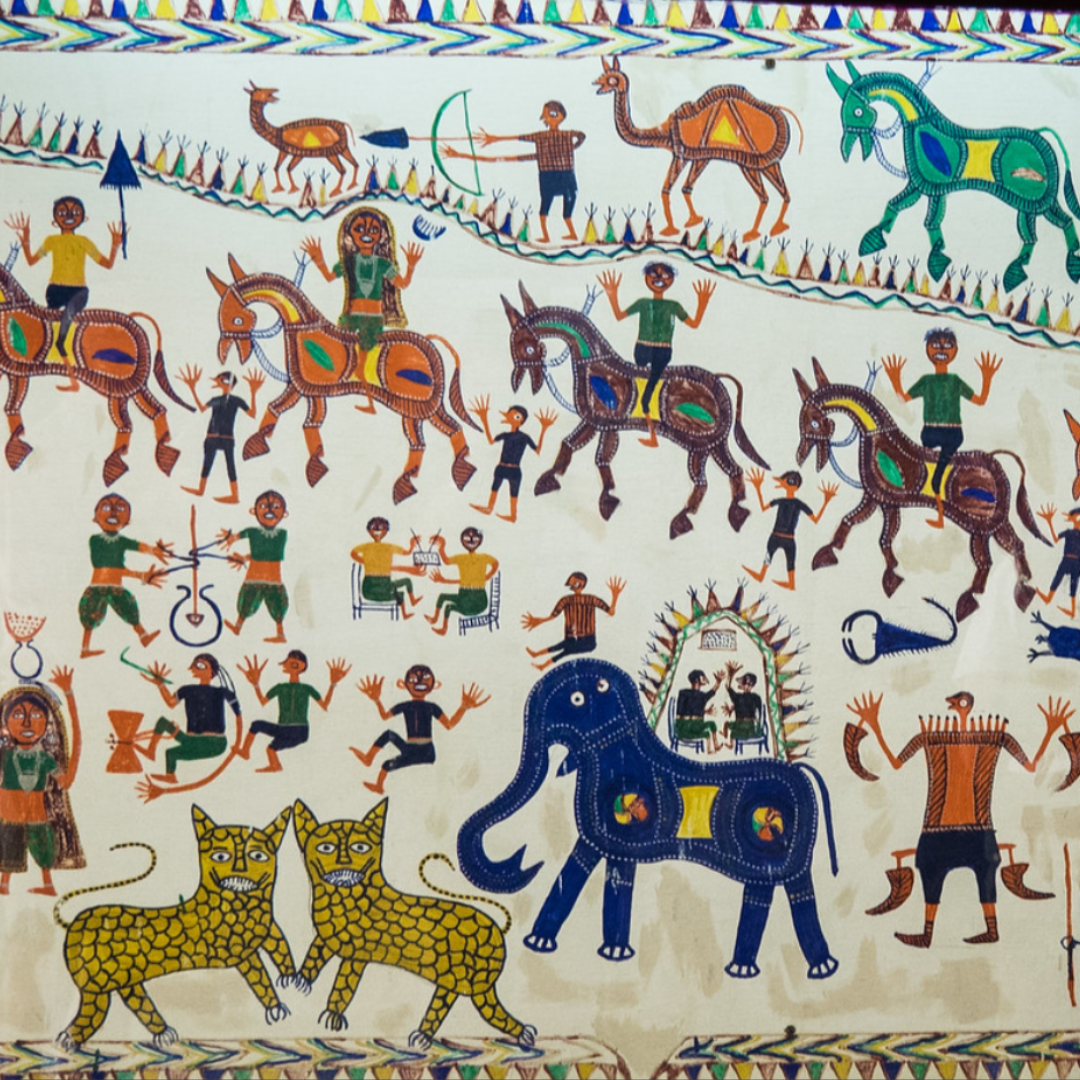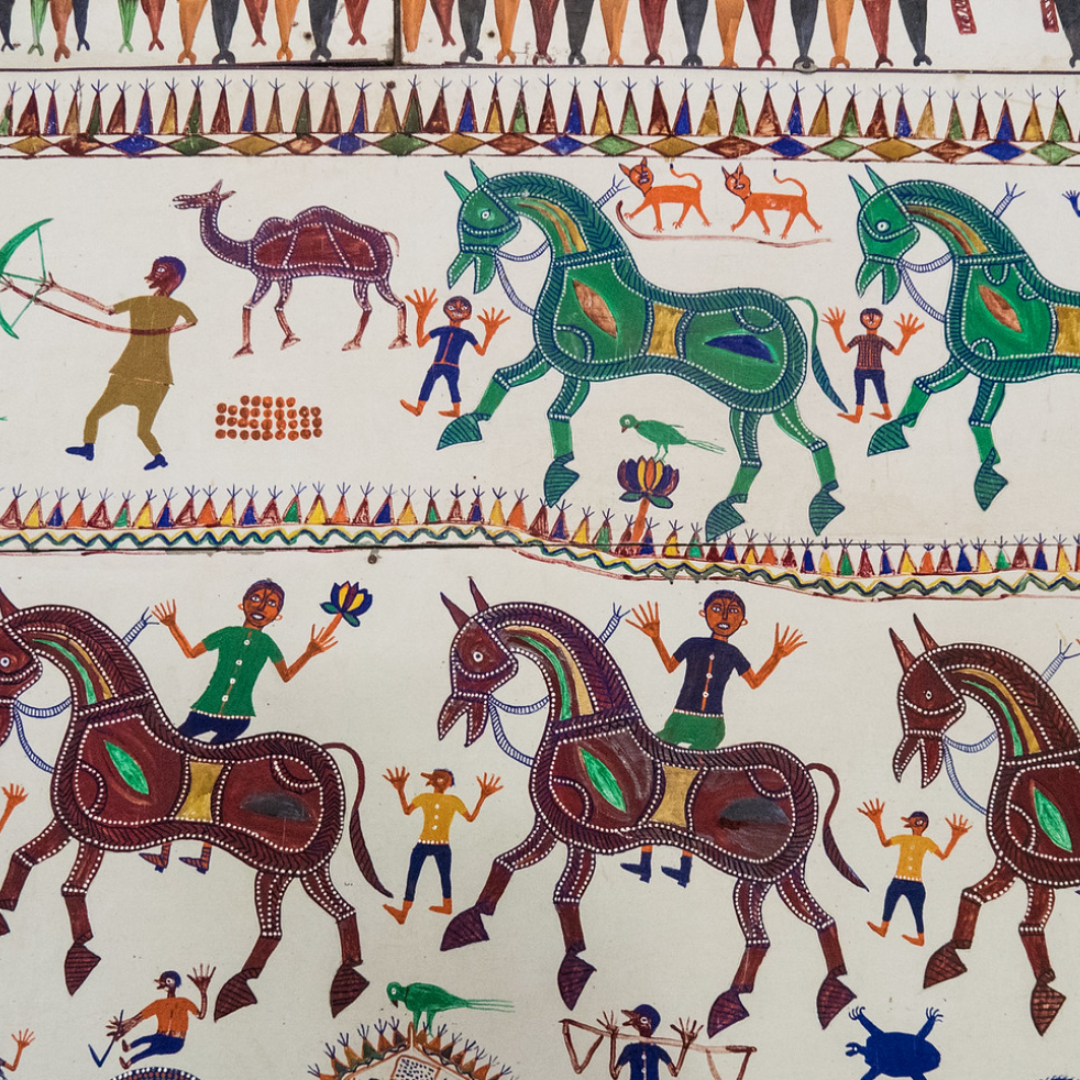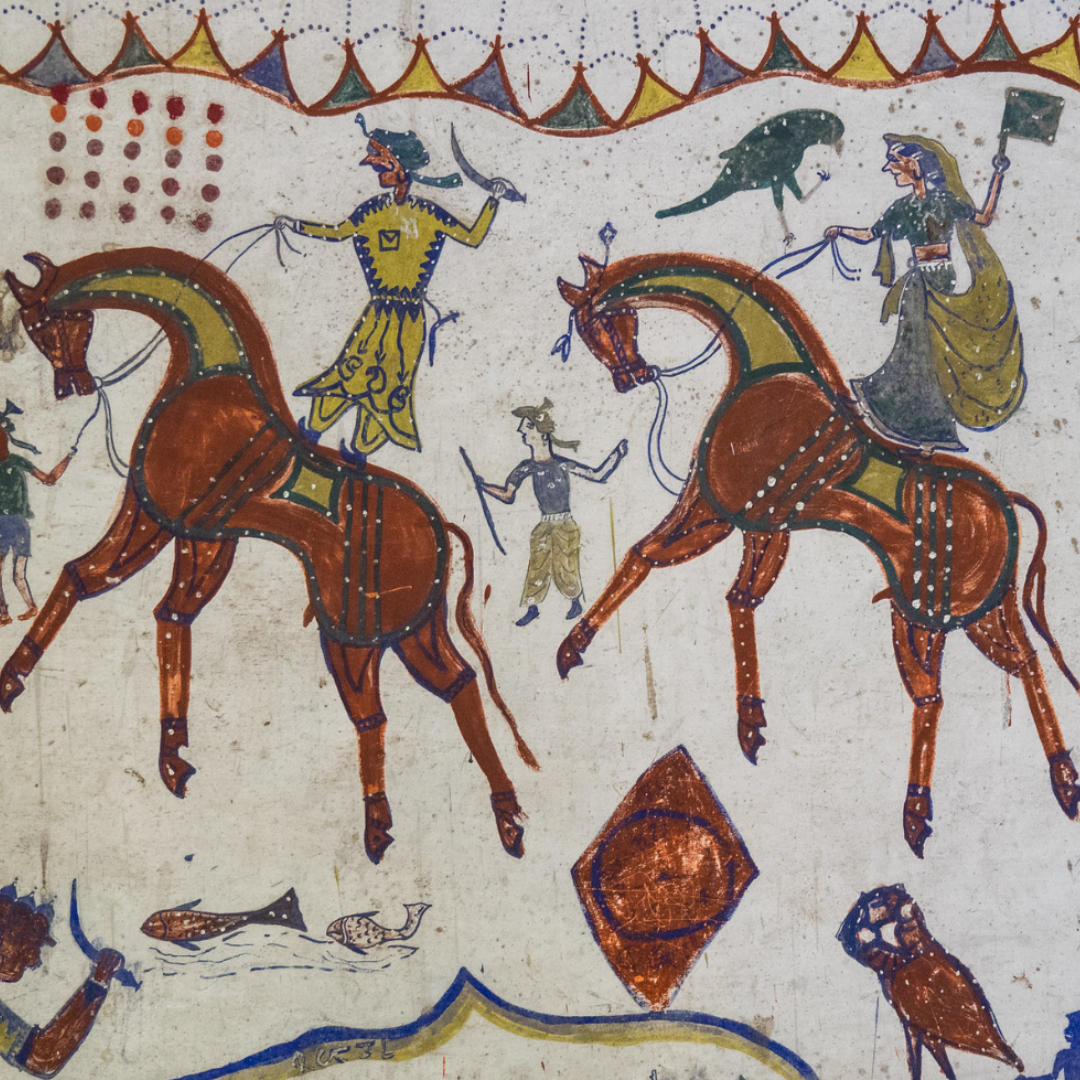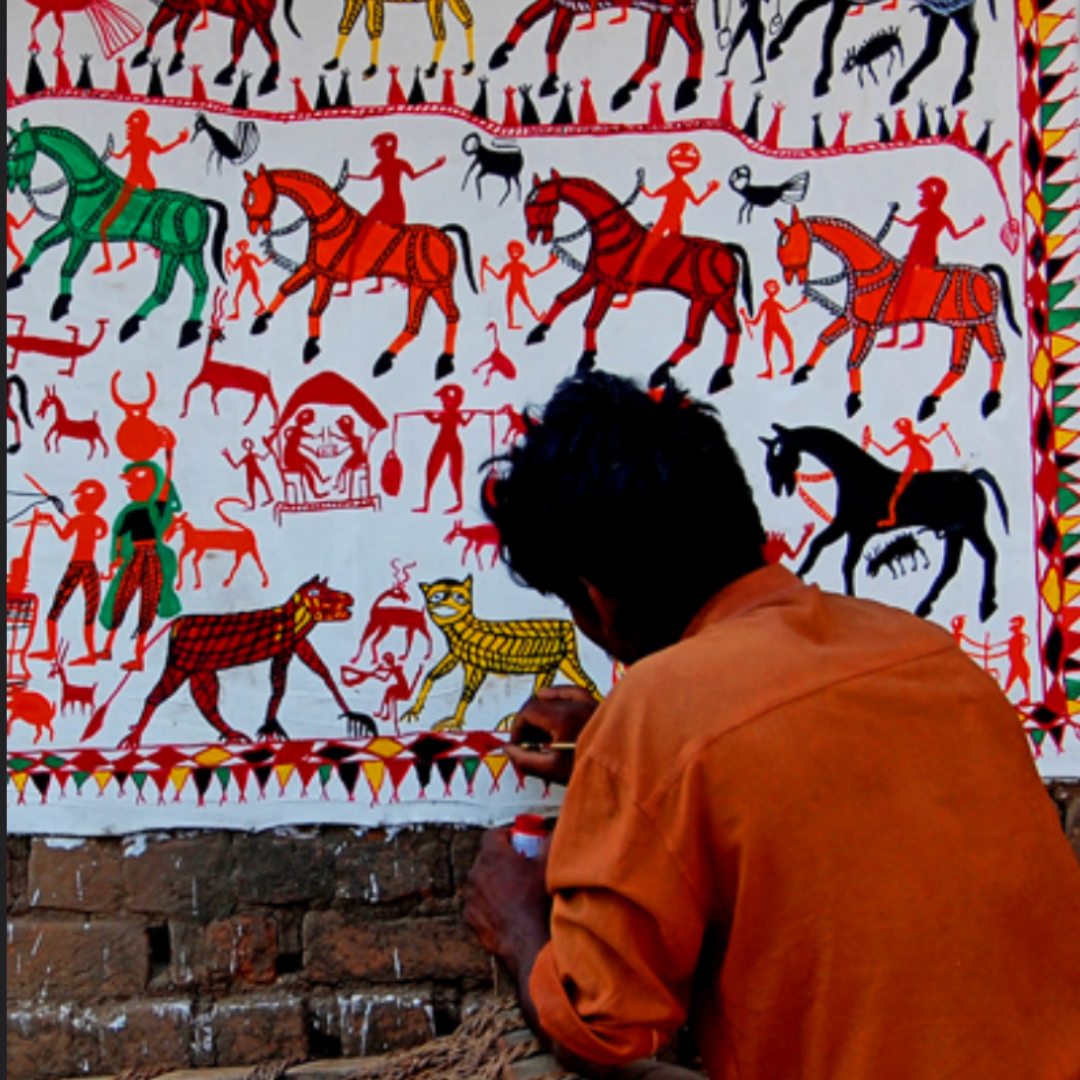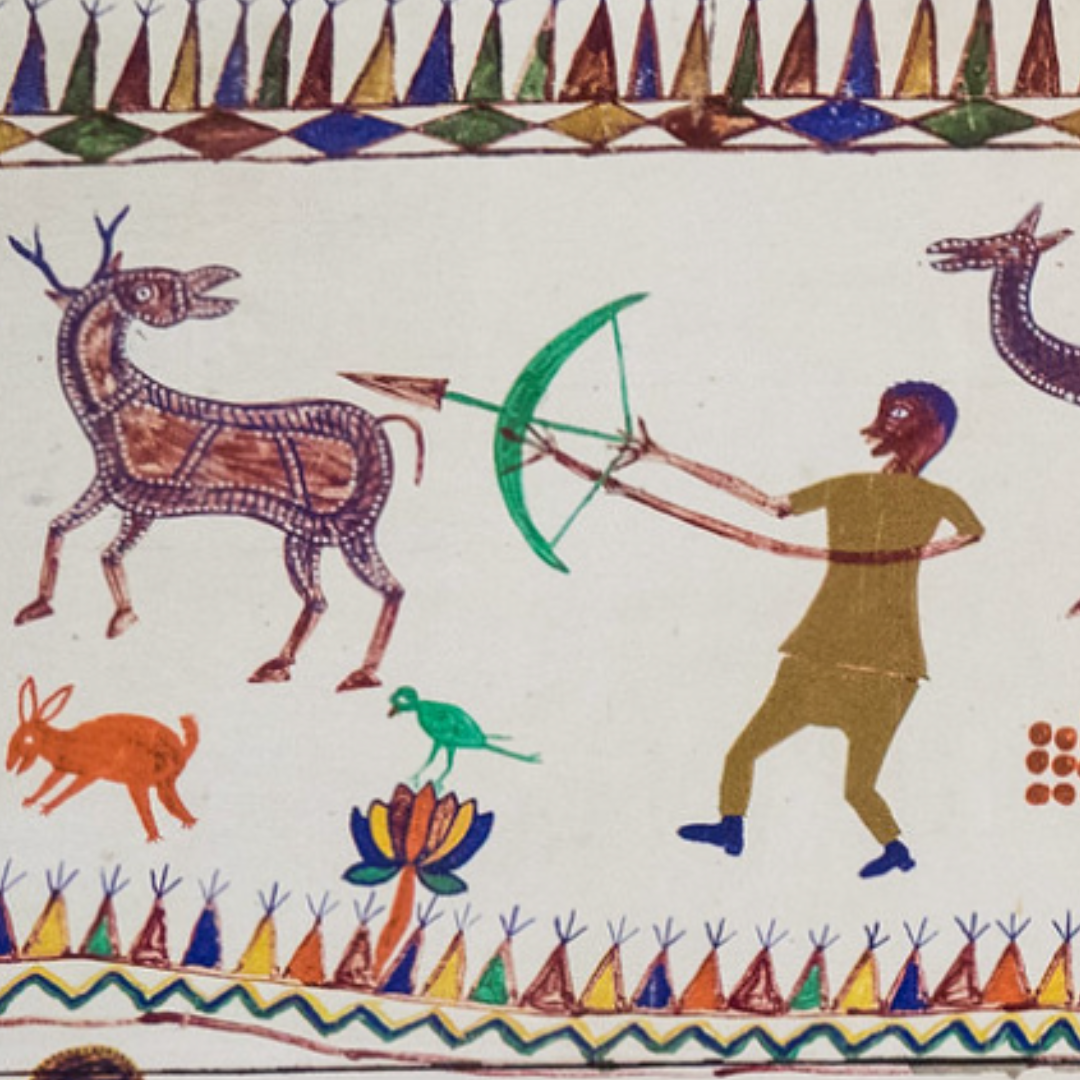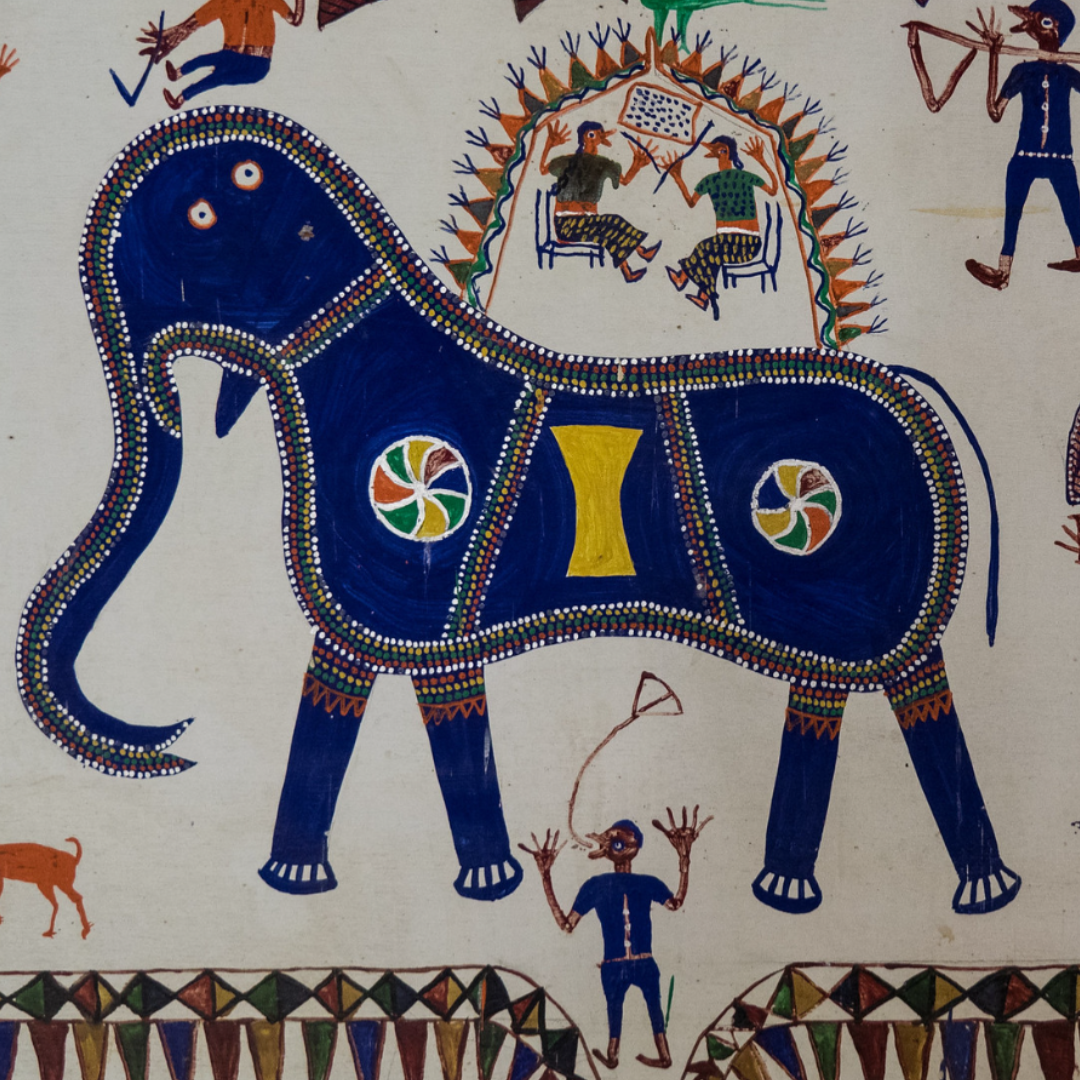
Map Loading...
Pithora painting
Gujarat | Madhya Pradesh
In the tribal heartlands of Gujarat and Madhya Pradesh, “Pithora Painting” (locally, પીઠોરા ચિત્રકला) transforms home walls into vivid storytelling canvases. It appears mainly in the Chhota Udaipur and Panchmahal districts of eastern Gujarat and extends to parts of western Madhya Pradesh. Pithora painting is a wall mural tradition practiced chiefly by the Rathwa, Bhil, and Bhilala tribes. Painted on the central wall (raj bhitt) of a house, it serves both as a mark of pride and an invocation for blessings, wellbeing, and communal harmony.
Historical roots of Pithora painting run deep into the area’s tribal mythology. The works are dedicated to Baba Pithoro or Pithoradev, the principal deity for these communities. Legends say the art traces back to ancient cave paintings where the Rathwa believed their gods first left their mark. Over the centuries, the painting became integral to household rituals and local ceremonies. It visually narrates tribal myths and stories, making each work an artifact of cultural memory.
Traditionally, the process starts with unmarried girls preparing the wall with cow dung and clay, then coating it with chalk or white earth for purity. The male artists, known as lakhara or likhandra, sketch and fill scenes with natural pigments: red ochre, indigo, turmeric, soot, and leaf-green. Brushes are crafted from local twigs or cloth. Horses dominate the imagery, symbolizing divine presence, while the sun, moon, animals, and scenes of daily life fill out the narrative.
The lasting appeal of Pithora painting lies in its intricate storytelling, bold visual language, and ritual sanctity. Each work is distinct, a communal record and a sacred object. Its unique position in the Indian tribal art market comes from its ritual legacy, vibrant composition, and increasingly rare authentic practitioners.
Photo Courtesy: B M Kanoja | Rita Willaert | Chhota Udepur Museum
Material
Natural Dyes, Cowdung
Technique
Painting/ Wall Art
Showcase
